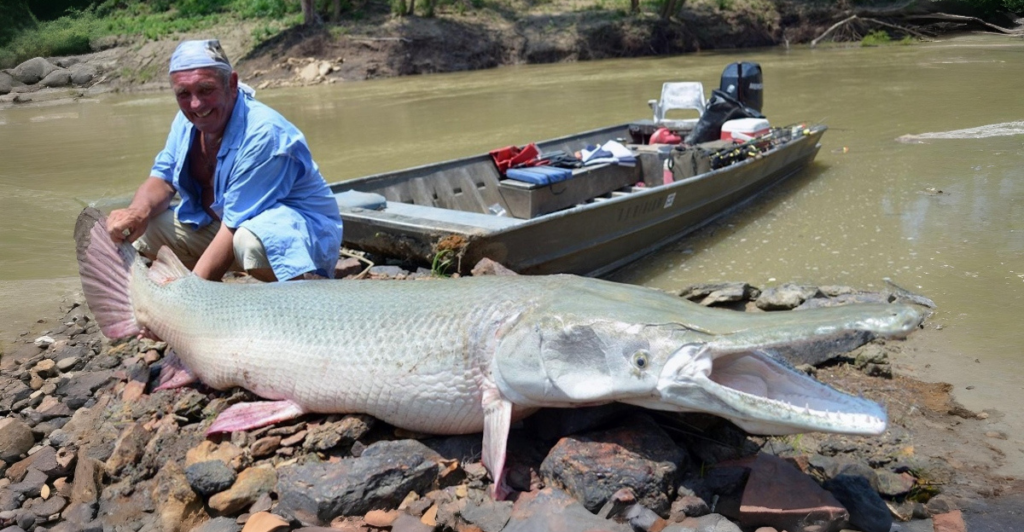
At first glance, the Mississippi River might resemble any other bit of water—slow, wide, and dirty. But below the surface is a different world that few have ever had the opportunity to see. It’s not just home to a few bass and minnows.
No, the Mississippi has creatures in it that wouldn’t seem out of place in a science fiction film or an ancient fossil exhibit. Imagine six-foot armored beasts, catfish big enough to tug on a canoe, and fish so bizarre that you’ll swear they were fake. Some of them are fossil creatures unchanged after millions of years. Others are invasives with enormous appetites that may ruin ecosystems.
Get on the raft and let’s take the deep journey down because you’re in for an introduction to ten of the most shocking, real-life river monsters to lurk through America’s most legendary waters.
1. Alligator Gar – The Prehistoric Predator
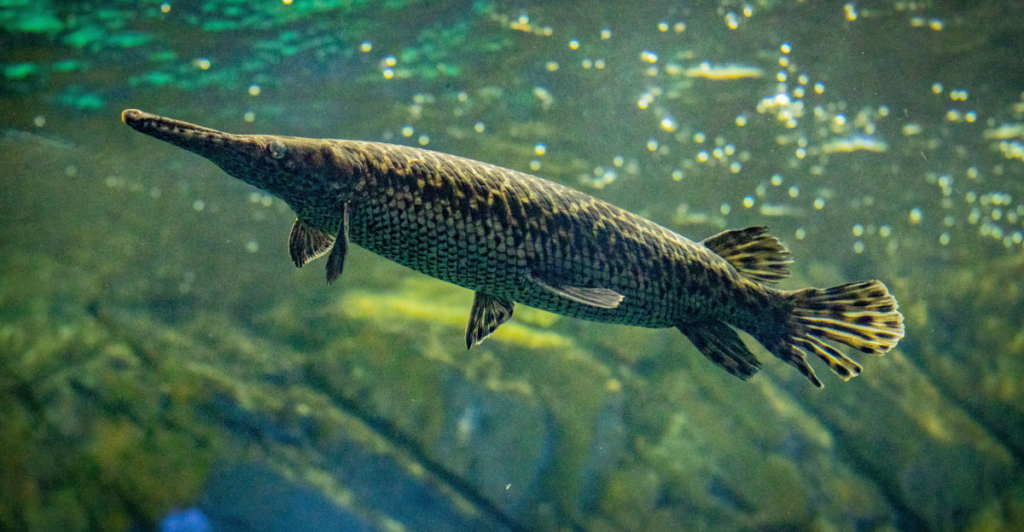
With a name like “alligator gar,” you’d expect a beast—and you’d be absolutely right. This monster looks like it escaped from a dinosaur exhibit, with a torpedo-shaped body armored in hard scales and a mouth full of sharp teeth.
They can grow over six feet long and weigh more than 200 pounds. Native to the Mississippi River, these fish have existed for over 100 million years, making them one of North America’s oldest species. Although they’re not aggressive toward humans, their sheer appearance is enough to send a chill down your spine.
Alligator gar can breathe air, survive in low-oxygen waters, and feed on almost anything. Think of them as apex survivors—resilient, ancient, and quietly dominating the depths of the Mississippi.
2. Flathead Catfish – The Night Stalker
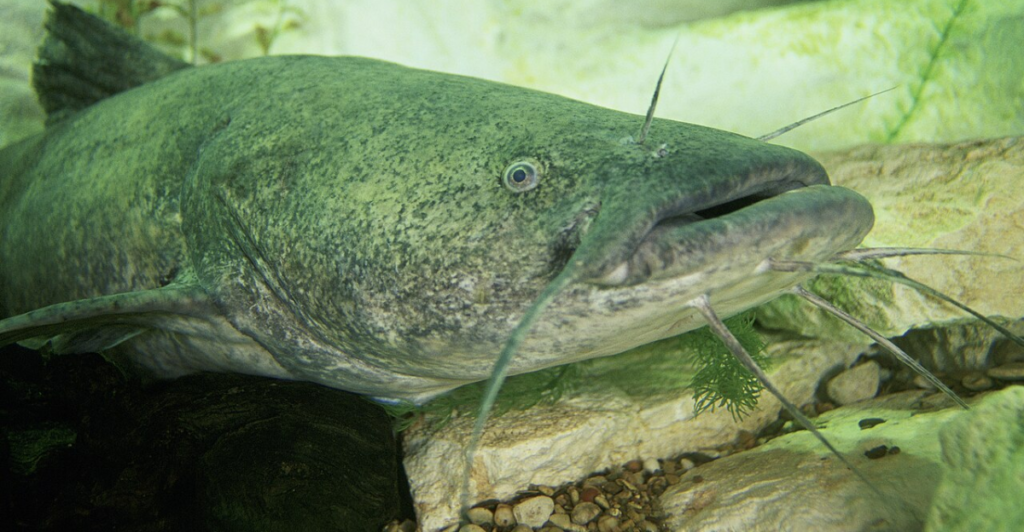
The flathead catfish is not just big—it’s a bona fide heavyweight. Flatheads weigh over 100 pounds, with the record flathead tipping the scales at nearly 140 pounds. Flatheads derive their name from their wide, flat heads that appear to have been dented by something heavy.
Unlike other scavenging catfish, flatheads are active feeders. They are live prey specialists and will stalk and ambush other fish such as sunfish or perch in the dead of night. Creeping unseen in the depths of river pits, they attack with savage ferocity.
They are well camouflaged due to their mottled coloration and sluggish daytime activity. But don’t be fooled—once the sun dips below the water’s surface, this Mississippi monster is alive. It’s a merciless predator, prowling the muddy bottom of the Mississippi at night.
3. Blue Catfish – The Giant Glutton
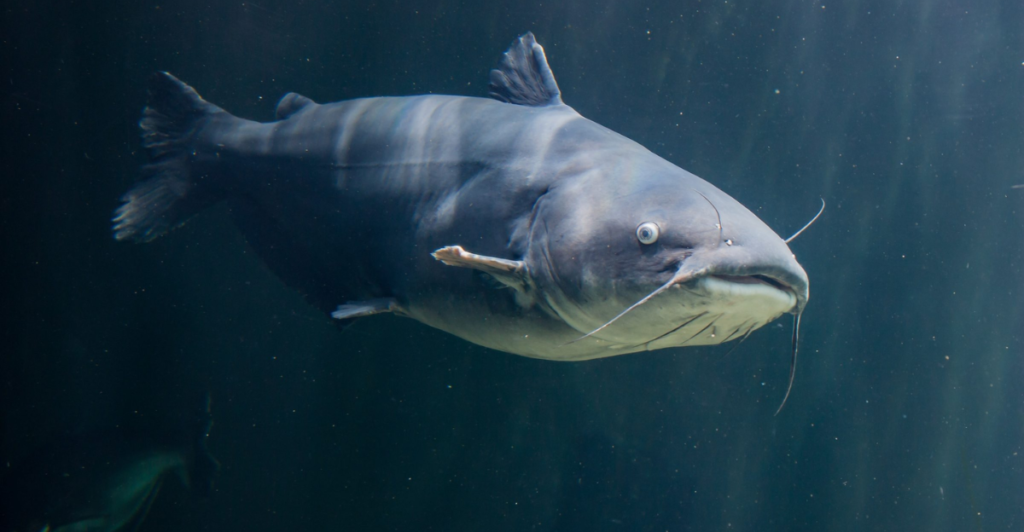
You might have thought that fish couldn’t compete with a teen in terms of weight, but think again. The blue catfish is the largest freshwater fish in North America, and one of its regular haunts is the Mississippi River.
They reach more than five feet in length and weigh more than 150 pounds. The thing that makes them so menacing isn’t length—it’s hunger. Blue catfish will eat almost anything: fish, clams, insects, even birds if the opportunity arises.
They’re opportunistic feeders and incredibly adaptable. Anglers love the challenge of hooking one, but you’d probably rather not meet one face-to-face in the water. With a body built like a tank and a diet to match it, the blue catfish is an unstoppable force in the river food chain.
4. Longnose Gar – The Needle-Faced Fossil
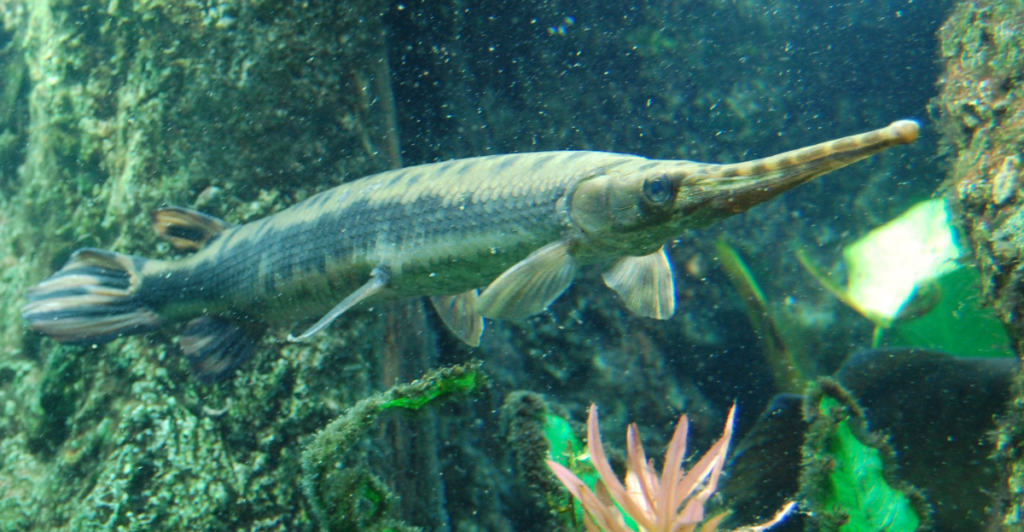
The longnose gar looks like it came out of a time machine. It’s an evolutionary marvel, with ‘armor’ and a mouth full of teeth. Reaching up to four feet in length, this river animal has a needle-toothed snout full of pointy teeth that it uses to snatch unsuspecting prey. Encased in diamond-shaped, armor-like scales, the longnose gar is made to last and has done just that for more than 100 million years.
It favors slow-moving backwater and riverbank margins where it swims slowly just below the surface, buried in submerged trees and weeds. Inoffensive to people, its intimidating appearance and old-time credentials earn it huge “monster” points.
5. Shovelnose Sturgeon – The Armored Vacuum

Say hello to the shovelnose sturgeon. With its flat, pointed snout and whiskers (barbels) hanging off its face, this fish eats by vacuuming up insects, worms, and crustaceans off the riverbed.
It’s North America’s smallest sturgeon, typically only growing to a couple of feet or so in length—but what it doesn’t have in height, it gains in strangeness, almost appearing submarine-like. Its bony, ridge-topped body and prehistoric appearance set it apart from other river creatures. Shovelnose sturgeons are perfectly adapted to violent currents and dark depths.
They’ve been around for millions of years, inching their way along the river bottom like ancient sentinels. Appearance aside, they’re harmless to humans—unless you’re a little creeped out at the thought of fish fossils having fins.
6. Bowfin – The Jurassic Jaw Snapper
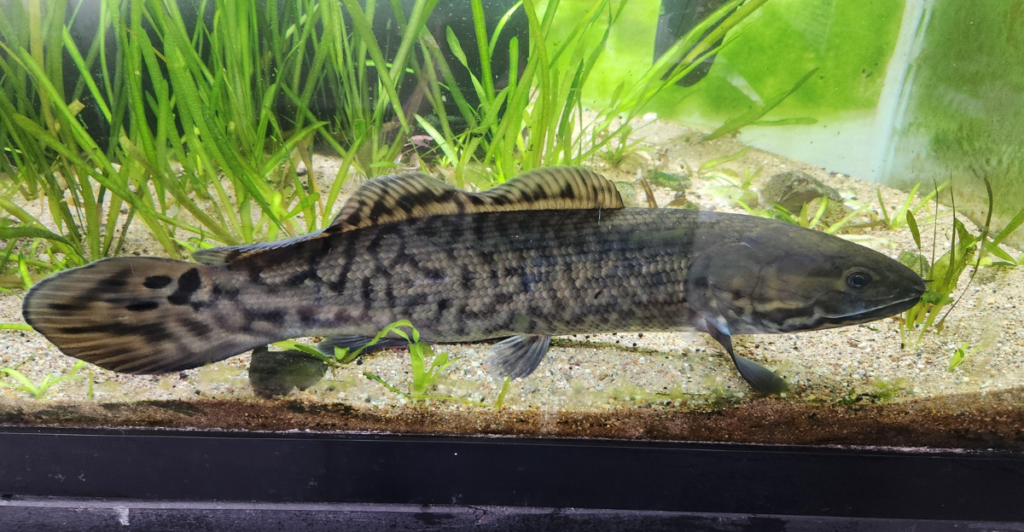
Bowfin are often unappreciated, but these eel-like fish have been around since the Jurassic era. That’s right—these fish swam around in rivers when dinosaurs dominated the planet.
They reach three feet in length and possess a characteristic dorsal fin along their back resembling a prehistoric mohawk. They have powerful jaws with rows of sharp teeth to capture fish, frogs, and crayfish. Bowfin are extremely resilient—they can gulp air and live in low-oxygen conditions where most fish would die.
Their survival tactic is straightforward: adapt, ambush, and strike. Despite their lineage going back millions of years, they remain in the water today. Creepy? As sure as shooting. Impressive? You can bet your bottom dollar. Bowfin prove that evolutionarily, there’s not much to improve when you’re already genetically unmatched.
7. Pallid Sturgeon – Ghost of the River
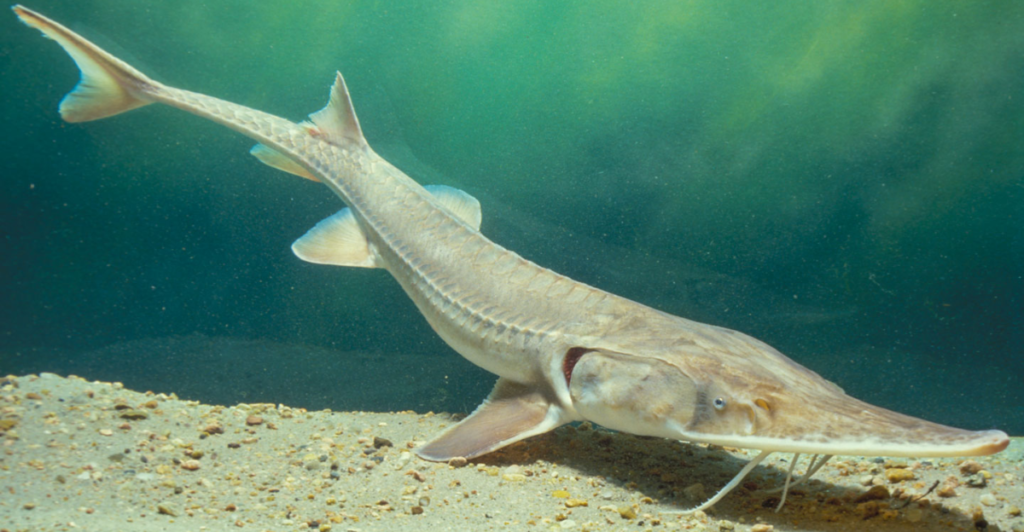
The pallid sturgeon is the ghost of the Mississippi—bony, shy, and age-old. This creature has paddled North America’s rivers and lakes for more than 70 million years, back when T. rex dominated the earth.
Today, however, experts worry that it may become extinct. Wildlife managers monitor them with radio collars. They possess an extended, shovel-faced snout and bony scutes along their back. Pallid sturgeon spend their lives scouring riverbeds for insects and small invertebrates, rarely surfacing and mostly avoiding human interaction.
You’d be lucky (or maybe spooked) to spot one in the wild. Despite their rarity, these river monsters are essential to the Mississippi’s ecosystem—and a living reminder that some prehistoric creatures never really left.
8. Northern Snakehead – The Invasive Invader

Picture a fish that can breathe, walk short distances on land, and consume almost anything. Say hello to the northern snakehead. An Asian native, this invasive species has made its way into some of the Mississippi basin—and wildlife authorities are not happy.
Snakeheads are nasty predators that will ruin native fish populations. With their long, tube-like body, pointed teeth, and reptilian, ghostly face, they are closer to a horror movie monster than a freshwater fish. And the worst part? They’re difficult to control.
Domesticated, snakeheads dominate native animals and disturb the natural equilibrium. They’re monsters in more senses than one—they’re ecological nightmares. If you do manage to catch one, don’t put it back in the water. Officials ask that you report it at once.
9. Lake Sturgeon – The Living Legend
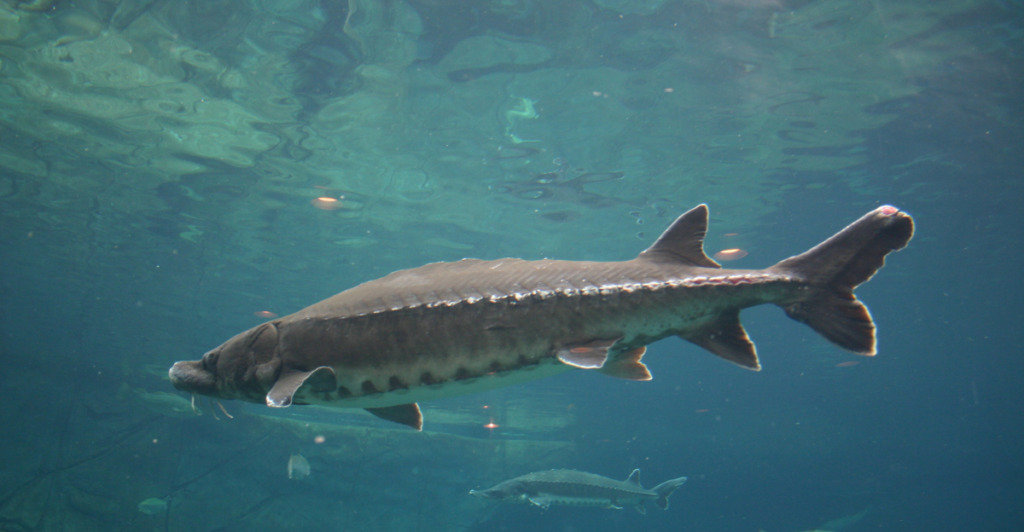
If the Mississippi River did have a king, it might be the lake sturgeon. These huge gentle giants grow to over seven feet in length and live for over a century.
They are shrouded in bony plates and have a ‘vacuum mouth’ under a pointy snout, giving them the appearance of armored submarines rolling along the bottom of the river. Lake sturgeon are filter feeders, scooping up bugs, snails, and tiny fish from the riverbed. They’re slow, methodical, and mesmerizing to watch—if you’re lucky enough to spot one.
Despite their size, they’re shy and peaceful — more ancient monk than river beast. But don’t let their calm demeanor fool you. Their enormous size and ability to withstand millions of years are what make them actual monsters of the Mississippi—a living legend still quietly dominant under the surface.
Explore more of our trending stories and hit Follow to keep them coming to your feed!

Don’t miss out on more stories like this! Hit the Follow button at the top of this article to stay updated with the latest news. Share your thoughts in the comments—we’d love to hear from you!







